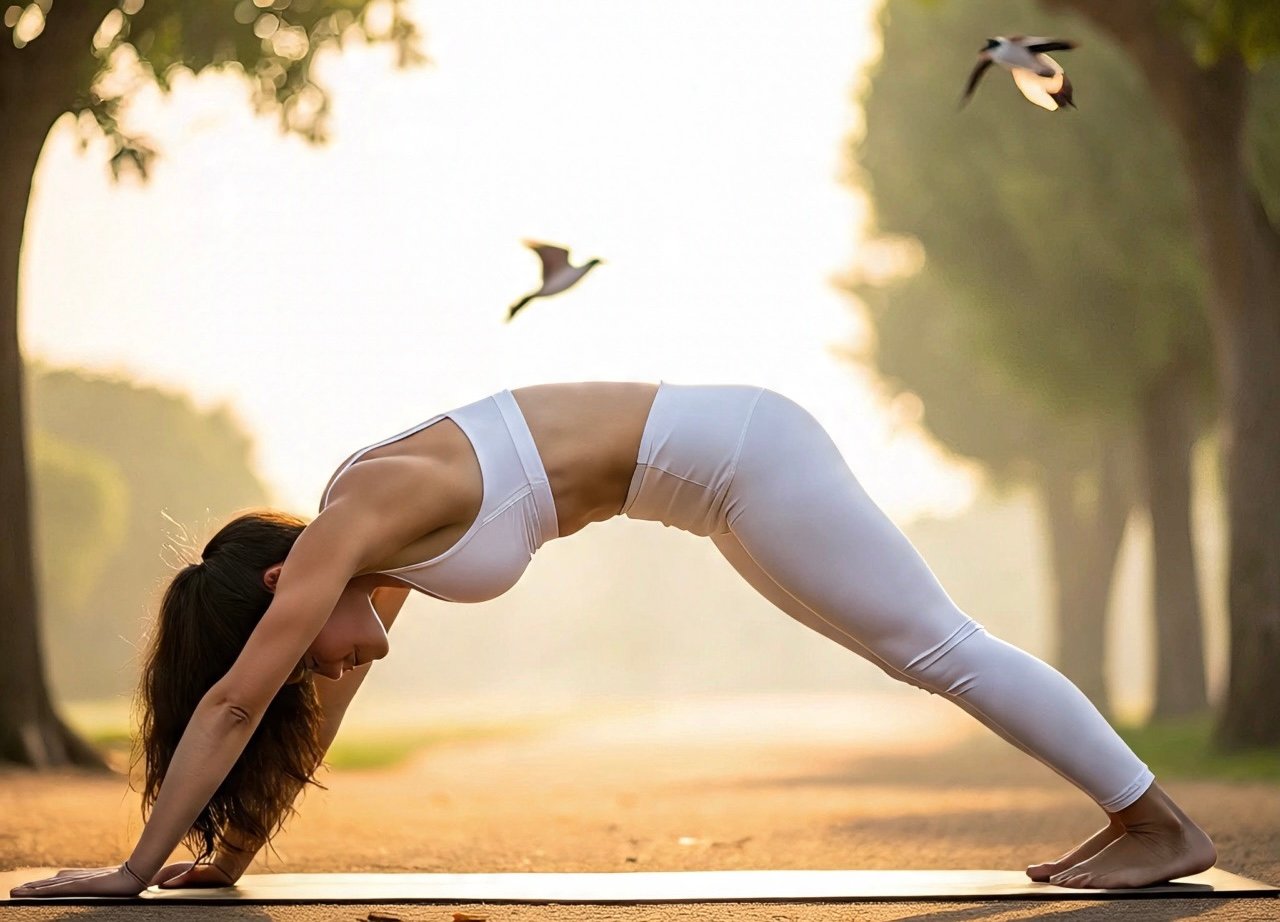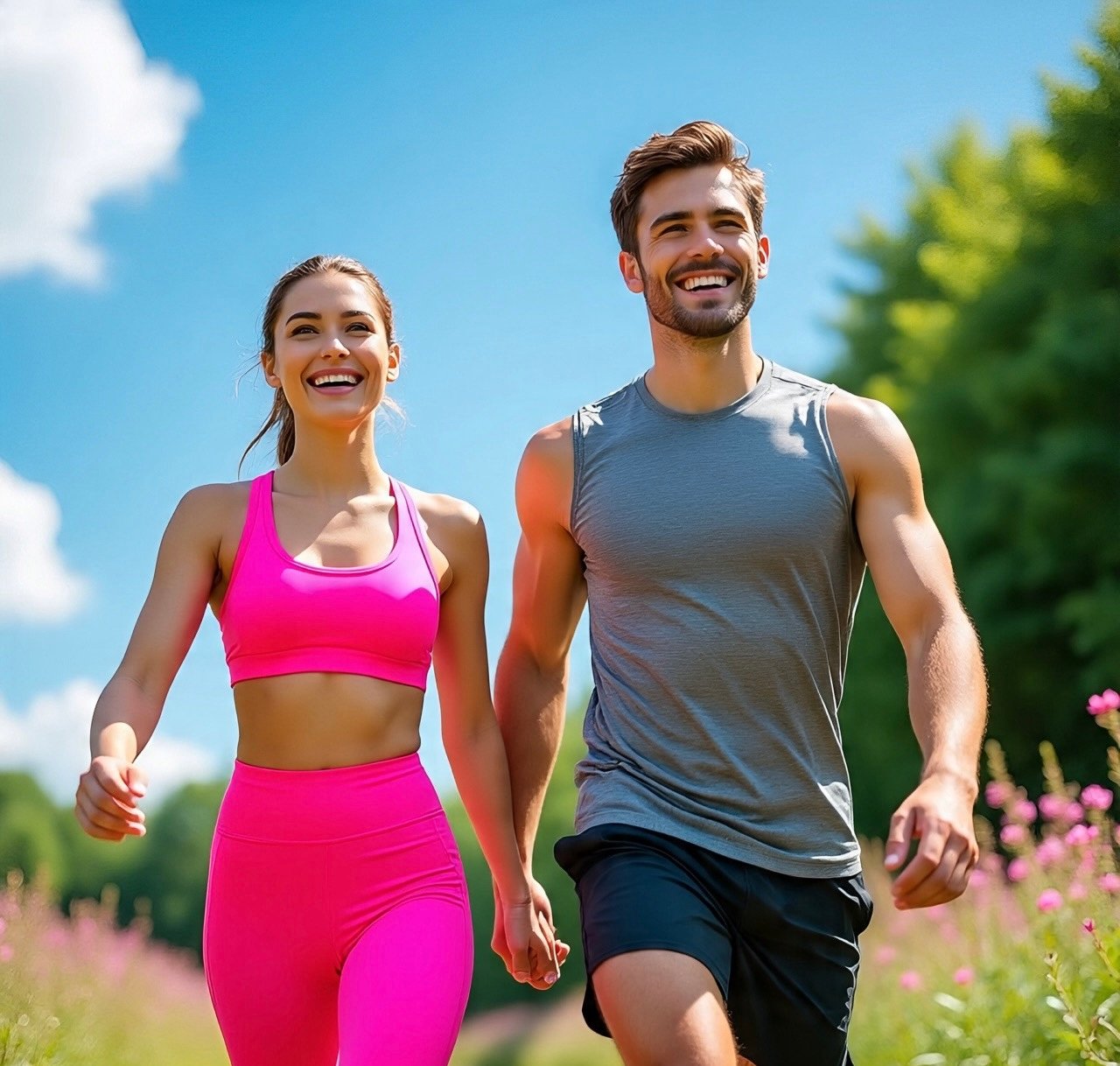Leg cramps often appear without warning — in the middle of the night or during intense exercise — causing sudden, sharp pain and muscle tightening.
These spasms usually affect the calf, thigh, or foot muscles, sometimes leaving soreness that lingers for hours.
Dehydration, poor circulation, and overexertion are common triggers, but consistent lifestyle changes can significantly lower their frequency.
While proper hydration and balanced nutrition are essential, yoga offers a gentle, effective way to both prevent and relieve cramps.
It improves blood flow, loosens tight muscles, and boosts flexibility — keeping your legs stronger, healthier, and less prone to spasms.
1. Downward Dog (Adho Mukha Svanasana) – The Circulation Booster
This classic yoga pose lengthens your hamstrings, calves, and Achilles tendons while promoting healthy circulation and easing stiffness.
How to do it:
- Start on all fours with hands shoulder-width apart and fingers spread wide.
- Press into your palms, tuck your toes, and lift hips toward the ceiling.
- Form an inverted “V,” gently pressing heels toward the mat without strain.
- Keep your spine long, relax your neck, and breathe evenly for 30–60 seconds.
Pro Tip: Focus on lifting through your hips instead of forcing your heels down for a safer, deeper stretch.
2. Hero Pose (Virasana) – The Thigh and Knee Opener
Hero Pose deeply stretches the thighs, knees, and ankles — common cramp areas after prolonged sitting or exercise.
How to do it:
- Kneel with knees together and feet slightly wider than hip-width apart.
- Lower hips to sit between heels.
- Use a yoga block or cushion under hips if needed.
- Keep your spine tall and breathe for 1–3 minutes.
Caution: Avoid this pose if you have knee injuries or severe joint pain.
3. Standing Forward Fold (Uttanasana) – The Hamstring and Calf Release
A gentle yet powerful stretch for hamstrings, calves, and hips, this pose also helps calm the mind and reduce muscle tension.
How to do it:
- Stand with feet hip-width apart and knees slightly bent.
- Hinge forward from hips, letting arms hang toward the floor.
- Keep your spine long; bend knees if hamstrings feel tight.
- Hold for 30–60 seconds, breathing slowly.
4. Reclining Leg Stretch (Supta Padangusthasana) – The Athlete’s Choice
Perfect for runners and cyclists, this stretch lengthens hamstrings, calves, and hips while improving flexibility in the lower body.
How to do it:
- Lie flat on your back with both legs extended.
- Raise one leg toward the ceiling, looping a strap or towel around your foot.
- Keep the opposite leg grounded and spine flat.
- Hold for 30–60 seconds per side, breathing deeply.
Pro Tip: Stretch gradually to avoid strain and overstretching.
5. Legs Up the Wall (Viparita Karani) – The Restorative Healer
This gentle inversion reverses blood flow, reduces swelling, and soothes overworked or cramp-prone muscles.
How to do it:
- Sit sideways with one hip close to a wall.
- Swing legs up the wall as you lie back comfortably.
- Rest arms by your sides, close eyes, and breathe deeply.
- Stay for 5–10 minutes.
Bonus: This pose also promotes relaxation and better sleep.
Why Yoga Helps with Leg Cramps
Yoga prevents and relieves muscle cramps through:
- Improved circulation – delivering oxygen and nutrients to muscles.
- Enhanced flexibility – reducing muscle tension and stiffness.
- Nervous system balance – helping muscles contract and relax efficiently.
Practicing these poses regularly, alongside proper hydration and nutrition, significantly lowers cramp frequency.
Q&A: Yoga and Leg Cramps
Q: How often should I practice these poses?
A: At least three times per week to improve flexibility and circulation.
Q: Can yoga stop a cramp while it’s happening?
A: Gentle stretches like Reclining Leg Stretch may help, but avoid forcing the muscle.
Q: Is yoga enough?
A: It’s effective, but hydration and balanced nutrition enhance results.
Q: Are these beginner-friendly?
A: Yes, but listen to your body and avoid overstretching.
FAQs
- Can dehydration cause leg cramps?
Yes. Low hydration disrupts muscle function and increases cramp risk. - What nutrients prevent cramps?
Magnesium, potassium, calcium, and sodium. - Is yoga safe during pregnancy for cramps?
Yes, with modifications and medical approval. - How long should I hold each pose?
30–60 seconds, focusing on steady breathing. - Should I warm up before yoga?
Yes, light movements help prepare muscles.
The Takeaway
Leg cramps may be common, but they don’t need to disrupt your life.
With consistent yoga practice, proper hydration, and good nutrition, you can keep muscles flexible, improve circulation, and reduce painful spasms — naturally.




